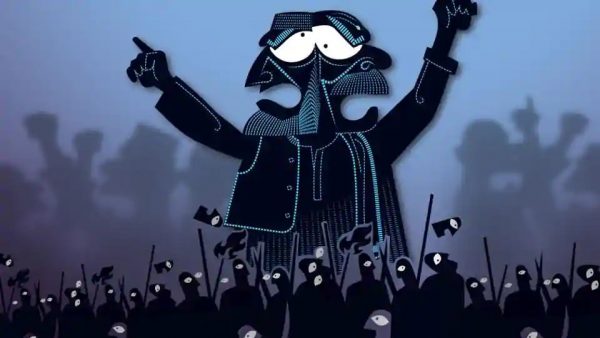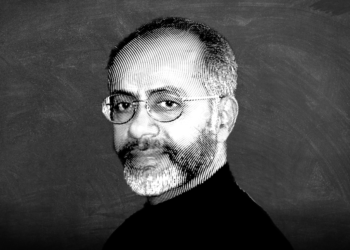
The spectacular demise of India’s pluralistic democracy and the growing normalization of intolerance within the country has caught the attention of many scholars across the world ever since Indian politics took its fateful turn towards the ideological right in 2014. Probably India has moved in the direction that John Stuart Mill in his magnum opus ‘On liberty’ most feared a democracy would degenerate into – a state where the will of the majority would be promoted at the cost of the minority. However, even till recently, On the surface India still boasted of its cherished image as a nation which was living in harmony with its plethora of religious faiths and multiplicity of cultures even though sporadic events of communal tension and violence did occur periodically in the post partition era. Majoritarianism, although ever continuous as a political strategy was till the beginning of the 21st century, subtle in its assertions and only characterized by sporadic outbursts of violent assertions of the majoritarian will on the minority.
Creating a situation of ‘Tyranny’ can be understood as a more long drawn affair. It requires systemic application of a number mechanisms of hegemonic control in creating the ‘demonic other’ which is aimed at unifying the masses against the people of a particular race, religion, caste or ideology. Hence, the problem of communal politics in India just cannot be analyzed as a vice which political parties harness to mobilize and consolidate its vote bank. That’s only part of the story. What would be a more complete and holistic picture would be to understand how this distorted image of this ‘demonic other’ sustains itself and the mechanisms of hegemonic control which aid to its sustenance. For example, If we analyze the political strategies of fascist Italy and Nazi Germany we will see that they were based on two primary strategies: a) The creation of, as Sigmund Freud would call it, “the libidinal bond to the Leader” and b) creation of the fantasy of the ‘demonic other’.
In the context of India, While creating the gargantuan image of our current prime minister has achieved the unnatural obsession with the leader, sustaining the fantasy of the ‘demonic other’ has been a more central strategy in the process of hegemonic control by the present regime. From the perspective of Jacques Lacan fantasy is what sustains desire. Fantasy sustains the subject as a subject of desire where desire is reducible neither to need nor demand. Fantasy’s object is not thus not to fulfil desire but keep the subject as desiring. It not only aims at sustaining the subject’s desire but to prescribing how to desire. This is the stabilizing function of fantasy, which provides the subject a mode of enjoying his subjectivity is what Slavoj Žižek in his reading of Lacan calls Jouissance. This creation of the fantasy is what Žižek terms as the ‘external excess of ideology’.
Creating the ‘Other’, painting its corrupted, decadent image, blaming the other for all the wrongs of society and creating the utopia by its extermination are some of the techniques of obscene enjoyment that ideology seeks to sustain in order to repress the individual’s own subjectivity. Hence to understand how ideology grips the subject in the India that has emerged today, it is essential to study how the fantasy of a strong India devoid of the ‘demonic other’ is continuously being reproduced and the mechanisms through which this whole narrative is being sustained. Then the question arises, why is there an inherent need for populism structured on ideology to sustain fantasy? We believe that the possible answer lies in the two fold strategy if not universal almost always requires populism structured on ideology to undertake. Creating the ‘libidinal bond with the leader’ although is a vital unifying force which is required to be created and sustained, is deeply unstable without reproducing the obscene enjoyment linked to sustaining the image of the ‘demonic other’. It gives the majority a sense of ‘powerfulness’ – a false social sensation directed towards the minority social group which is interestingly a critical unifying factor overriding the gross inequalities of power and status within the members of the majority group itself. Hence the later strategy creates the stabilizing function of populism structured on ideology – a strategy vital for stabilizing the deeply uncertain popularity of any mass leader.
It is no secret that the present government understands the role of the media in this two fold process. Much light can be shed if we interpret the role of the media in the context of the ‘propaganda model’ put forward by Chomsky and Herman in the context of how the media not only generates but manufactures consent for the political class. What could be further extended for the sake of analysis and argument is as to how the media plays a vital role in not only manufacturing but also the sustenance of consent for the political class. Hence, putting it differently, media forms a very important apparatus which plays an overpowering role in the sustenance of ideology today.
Especially in the context of the Corona Virus Pandemic, the media forms the backbone which is increasingly playing the unifying function which reinvigorates the popular support for the leader but also continues to play vital institution which sustains such the twisted narrative of the demonic other. The most recent narrative of the great Muslim conspiracy to spread the Novel Corona Virus across India is proof of how this fantasy is being sustained.
Slandering the Muslim community in various media platforms has become a part of the systematic process of demonization of the said community. The Tablighi Jamat incident is another addition to this process. The media in whichever platform it may be has acted in the interest of the gatekeepers of Hindutva ideology in India. Several articles have been published till date which effectively reveal how the narratives of mainstream media on the portrayal of the Tablighi Jamat is nothing but another attempt to inject venom of Islamophobia and communalism even in such tumultuous time. But what would be more interesting to understand why rekindling this fear and hatred against the demonic other was not only necessary, but essentially required. The outbreak of the Pandemic created a twin threat to the state and its ruling ideology which effectively was seen as a far bigger threat than the resistance against the CAA/NRC or any challenge to state power before the outbreak of the Virus. The First and most obvious threat was it put a question on the capability of the state to handle the pandemic in its scale and magnitude. However the greater threat for the state was the creation of a kind of ‘social solidarity’ in fighting the virus which would directly challenge the reproduction of the fantasy of the demonic other and could shake the very foundation on which the ruling ideology is based. For example, if we study the media reports and the general mood of the public during the start of the pandemic in India, we will see that the initial anger was wholly directed towards the Chinese for spreading the disease and a economic boycott of the Chinese was publicly called for. The social repercussions for such anger had to be borne unjustly by north eastern people, although they had no role to play in the spread of the virus. A kind of social solidarity seemed to be developing which although had an external enemy (the Chinese) was somewhat causing a general acceptance in the public that the virus had its roots outside India and the nation as whole should work together to beat its onslaught on the people of India. The news of the Tablighi Jamat in spreading the virus however turned this budding solidarity on its head.
Tablighi Jamat is an organization for preaching Islam. This year their annual congregation took place in Nizamuddin Markez in New Delhi. On 21st march it was revealed via media that several corona positive patients have either a history of attending the congregation or they came in contact with those who did attend it. It is true that till 7th April, 30% of India’s COVID cases had a linkage with the congregation at Nizamuddin. But the Media equated the unfortunate event of Tablighi Jamat with the whole Muslim community in India and showed the entire incident clouded in religious sensationalization.
Immediately after the incident came to light media launched the narrative of bio-jihad on part of the Tablighi Jamat. It was repeatedly shown that there were several Moulavis who attended this congregation, has travelled all over India. Following this the media tried to establish that this was done intentionally on their part to spread the disease all over the country. Language played a very important role here. Recklessness and lack of awareness on their part is not negotiable in such circumstances but usage of words like ‘jihad’ prefixes the already established notion that Muslims are trying to wage a war against other religion. Repeated usage of the word ‘attack’ also proves that the media desperately tried to give the entire incident a communal connotation and fueled tensions.
Alongside mainstream broadcasting media, other digital platforms spread news which had no credibility. Fake information, morphed images, videos were created and shared to portray that Muslims were to be blamed for the spread of corona virus in India. Distasteful images of Muslims as viruses have been shared.
This has helped to rekindle the mass hysteria against the Muslims. The ‘demons’ of the existing narrative earned themselves a new fantastical position in the existing strategy of ideological reproduction. Muslims now, are not only seen as threats to other religions but a threat to humanity itself. The information that Islamic preachers who were exposed to the disease have travelled all around India has convinced people that Muslims are potential carriers of the corona virus. This euphoric notion sees itself manifested in several acts of discrimination against the Muslims. Whether it is a person denying to have food delivery from a Muslim, dismissing a Muslim security guard from his job under suspicion of being corona positive, or rejecting Muslims any forms of transport even in medical emergency, the suspicion and hatred is engulfing the entire country leaving the Muslims utterly humiliated and devoid of any social space.
The communalization of a health crisis has put forward the Muslims as criminals who should not be shown any mercy. But this criminalization is neither new nor recent. The media has been a part of the mechanism for spewing hatred.
Hence to conclude it would be apt to quote an excerpt from Žižek’s Latest Book Pandemic: COVID 19 Shakes the World. Žižek writes, “The ongoing spread of the coronavirus epidemic has also triggered a vast epidemic of ideological viruses which were lying dormant in our societies: fake news, paranoiac conspiracy theories, and explosions of racism. The well-grounded medical need for quarantines found an echo in the ideological pressure to establish clear borders and to quarantine enemies who pose a threat to our identity”. Although he makes this remark in a different context mostly interpreting the developments in Europe as a result of the Pandemic, his remark can be seen as very apt on the situation that is ongoing in India today and will probably lead to new forms through which the majoritarian politics will tyrannize and oppress the minority in the post COVID world.




